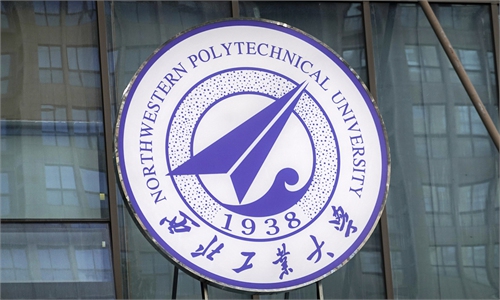A mosquito feeds at the Salt Lake City Mosquito Abatement District in Salt Lake City, United States.-AP
How warmer climates spread disease
“My father was full of life and used to walk for miles each day. I was expecting him to die at some point, but not suffering like that, taken from me by a mosquito,” she said her late father, Bernardino, who died aged 80.
Italy was only declared malaria-free by the World Health Organisation (WHO) in 1970, but now, other lesser-known mosquito- or tick-borne diseases are on the rise.
A complex mix of global warming, changes in land use and more movement of people and goods are contributing to the spread of illnesses – such as dengue or Lyme disease – to new regions in a worsening trend, the UN panel of scientists says.
Migratory birds infected by mosquitoes and flying over 3,200km from Senegal in West Africa have been identified as carriers of the West Nile virus that killed Cocco’s father in Sardinia, where summers are becoming hotter.
The Mediterranean island, and northern areas of Italy where the virus is also spreading, are both suffering more extreme events of floods and droughts.
Abundant water helps mosquitoes to breed, while more drought and fewer trees constrict the migratory birds’ ecosystems, forcing them into closer contact with each other, enabling some diseases to spread.
A municipal worker fumigates a housing colony as a preventive measure against mosquito-borne diseases in Hyderabad, India. —AFP
“People don’t seem to be aware of the threat,” said Cocco.
Epidemiologists identify habitat change as one of the main factors behind the intercontinental leap of the West Nile virus.
First identified in 1937 in the West Nile region of Uganda, the disease has spread within Africa and to other continents. Almost 3,000 people have died in the United States alone since a first outbreak in New York in 1999.
In the red clay houses of Maka Diama village in northwest Senegal, women make soap from plants that grow in a nearby river, which they sell to tourists and local hotels, and cook rice grown in surrounding paddy fields.
Recent years have seen huge changes in this wetland region teeming with crocodiles and migratory birds, most notably a leap in rice production, driven by government efforts to reduce Senegal’s reliance on imported rice.
Barrages built near the coast to retain and safeguard freshwater supplies from salty sea water have slowed river flows, and fertilisers used for rice paddies have encouraged the growth of river plants.
This push for greater food self-sufficiency has tripled rice production to 1.3 million tonnes over a decade. But changes in land use have upset the delicate wetland habitats, helping mosquitoes which lay eggs in stagnant water.
“There are so many mosquitoes here these days,” said Arame Diop, one of the village soap-makers. “Far more than there used to be.” Diop’s family already sleeps under mosquito nets to avoid malaria, which is endemic in Senegal.
Assane Gueye Fall, an entomologist at the National Livestock and Veterinary Research Laboratory in the capital, Dakar, said Senegal’s policies sought to improve food and water security.
“But to solve a problem, they created another,” he said of what he called the “explosion of mosquitoes” and of disease.
The long-distance carriers of West Nile are birds that receive the virus from bites by infected mosquitoes and then fly on their migratory routes, to be bitten once more by mosquitoes that then spread illness to people and other animals, mainly horses. Flamingos, herons, storks and birds of prey are among many migratory species found in the wetlands of the Djoudj National Bird Sanctuary, a Unesco World Heritage Site near Maka Diama.
Navigating his boat slowly, captain Ibrahima Ndao, the park conservationist, explained how abrupt changes in land use are impacting the wetlands. Pelicans are swooping all around, catching fish for their young.
“There has been a significant expansion of paddy fields around the reservoir. But we have to make sure that the birds’ environment is preserved,” he said.
“If the space of their environment is reduced, it’s easier for illnesses to spread,” said Ndao, pointing out increased growth of plants along the banks, including those used by the women of Maka Diama to make soap.
Ndao stressed the importance of a “one-health approach” that looks at human and animal health as one issue.
As in Europe, Senegal is also losing natural habitats through desertification exacerbated by climate change, forcing animals into closer contact with human communities. Vector-borne diseases – such as malaria, dengue, Zika, yellow fever and West Nile – are seen by WHO as an increased threat in Africa, potentially affecting over 800 million people, some 70% of the population.
West Nile virus has gained a foothold in an increasing number of countries, from Australia to Venezuela. Because it is easy to confuse West Nile with a generic flu or other mosquito-borne illnesses, patients rarely get tested. As a result, the impact of the virus in Africa is virtually unknown.
West Nile is often asymptomatic or mild, but one out of 150 people who contract the virus can develop severe neurological complication including meningitis, paralysis and even death.
In 2022, 12 European nations reported 1,335 locally acquired cases of West Nile virus – with a few others brought in by international travellers – and 104 deaths. It was the highest number of cases since a peak of more than 1,500 in 2018.
Italy suffered most in the European Union in 2022 with 51 deaths, ahead of 33 in Greece and five in Romania, according to the European Centre for Disease Prevention and Control. A public health campaign is alerting people, and authorities are stepping up tests of birds and mosquitoes.
The main vector is the Culex mosquito, but what makes West Nile potentially endemic is that it can be transmitted by more than 50 species of mosquito and by ticks, said entomologist Fall in Dakar. By contrast, dengue, for example, relies on one or two species. — Reuters
Fighting dengue with more mosquitoes
Which explains why a dozen people cheered last month as Tegucigalpa resident Hector Enriquez held a glass jar filled with mosquitoes above his head, and then freed the buzzing insects into the air.
Enriquez, a 52-year-old mason, had volunteered to help publicise a plan to suppress dengue by releasing millions of special mosquitoes in the Honduran capital, Tegucigalpa.
The mosquitoes Enriquez unleashed in his El Manchen neighbourhood – an area rife with dengue – were bred by scientists to carry bacteria called Wolbachia that interrupt transmission of the disease. When these mosquitoes reproduce, they pass the bacteria to their offspring, reducing future outbreaks.
This emerging strategy for battling dengue was pioneered over the last decade by the non-profit World Mosquito Programme, and it is being tested in more than a dozen countries. With more than half the world’s population at risk of contracting dengue, the World Health Organisation is paying close attention to the mosquito releases in Honduras, and elsewhere, and it is poised to promote the strategy globally.
In Honduras, where 10,000 people are known to be sickened by dengue each year, Doctors Without Borders is partnering with the mosquito programme over the next six months to release close to nine million mosquitoes carrying the Wolbachia bacteria.
“There is a desperate need for new approaches,” said Scott O’Neill, founder of the mosquito programme.
A Doctors Without Borders’ worker releasing laboratory-bred mosquitoes infected with bacteria that interrupt the transmission of dengue, in Tegucigalpa, Honduras, where 10,000 people are known to be ill from dengue each year. — AP
Scientists have made great strides in recent decades in reducing the threat of infectious diseases, including mosquito-borne viruses like malaria. But dengue is the exception: its rate of infection keeps going up.
Models estimate that around 400 million people across some 130 countries are infected each year with dengue. Mortality rates from dengue are low – an estimated 40,000 people die each year from it – but outbreaks can overwhelm health systems and force many people to miss work or school.
“When you come down with a case of dengue fever, it’s often akin to getting the worst case of influenza you can imagine,” said Conor McMeniman, a mosquito researcher at Johns Hopkins University. It’s commonly known as “breakbone fever” for a reason, McMeniman said.
Traditional methods of preventing mosquito-borne illnesses haven’t been nearly as effective against dengue.
The Aedes aegypti mosquitoes that most commonly spread dengue have been resistant to insecticides, which have fleeting results even in the best-case scenario. And because dengue virus comes in four different forms, it is harder to control through vaccines.
Aedes aegypti mosquitoes are also a challenging foe because they are most active during the day – meaning that’s when they bite – so bed nets aren’t much help against them. Because these mosquitoes thrive in warm and wet environments, and in dense cities, climate change and urbanisation are expected to make the fight against dengue even harder.
“We need better tools,” said Raman Velayudhan, a researcher from the WHO’s Global Neglected Tropical Diseases Programme. “Wolbachia is definitely a long-term, sustainable solution.”
Velayudhan and other experts from the WHO plan to publish a recommendation to promote further testing of the Wolbachia strategy in other parts of the world.
The Wolbachia strategy has been decades in the making.
The bacteria exist naturally in about 60% of insect species, just not in the Aedes aegypti mosquito.
“We worked for years on this,” said O’Neill, 61, who with help from his students in Australia eventually figured out how to transfer the bacteria from fruit flies into Aedes aegypti mosquito embryos by using microscopic glass needles.
Around 40 years ago, scientists aimed to use Wolbachia in a different way: to drive down mosquito populations. Because male mosquitoes carrying the bacteria only produce offspring with females that also have it, scientists would release infected male mosquitoes into the wild to breed with uninfected females, whose eggs would not hatch.
But along the way, O’Neill’s team made a surprising discovery: mosquitoes carrying Wolbachia didn’t spread dengue – or other related diseases, including yellow fever, Zika and chikungunya.
And since infected females pass Wolbachia to their offspring, they will eventually “replace” a local mosquito population with one that carries the virus-blocking bacteria.
The replacement strategy has required a major shift in thinking about mosquito control, said Oliver Brady, an epidemiologist at the London School of Hygiene and Tropical Medicine.
“Everything in the past has been about killing mosquitoes, or at the very least, preventing mosquitoes from biting humans,” Brady said.
Since O’Neill’s lab first tested the replacement strategy in Australia in 2011, the World Mosquito Programme has run trials affecting 11 million people across 14 countries, including Brazil, Mexico, Colombia, Fiji and Vietnam.
The results are promising. In 2019, a large-scale field trial in Indonesia showed a 76% drop in reported dengue cases after Wolbachia-infected mosquitoes were released.
Still, questions remain about whether the replacement strategy will be effective – and cost effective – on a global scale, O’Neill said. The three-year Tegucigalpa trial will cost US$900,000 (RM4.2mil) , or roughly US$10 (RM46) per person that Doctors Without Borders expects it to protect.
Scientists aren’t yet sure how Wolbachia actually blocks viral transmission. And it isn’t clear whether the bacteria will work equally well against all strains of the virus, or if some strains might become resistant over time, said Bobby Reiner, a mosquito researcher at the University of Washington.
“It’s certainly not a one-and-done fix, forever guaranteed,” Reiner said.
Many of the world’s mosquitoes infected with Wolbachia were hatched in a warehouse in Medellín, Colombia, where the World Mosquito Programme runs a factory that breeds 30 million of them per week.
The factory imports dried mosquito eggs from different parts of the world to ensure the specially bred mosquitoes it eventually releases will have similar qualities to local populations, including resistance to insecticides, said Edgard Boquín, one of the Honduras project leaders working for Doctors Without Borders.
The dried eggs are placed in water with powdered food. Once they hatch, they are allowed to breed with the “mother colony” – a lineage that carries Wolbachia and is made up of more females than males.
A constant buzz fills the room where the insects mate in cube-shaped cages made of mosquito nets. Caretakers ensure they have the best diet: males get sugared water, while females “bite” into pouches of human blood kept at 37°C.
“We have the perfect conditions,” the factory’s coordinator, Marlene Salazar, said.
Once workers confirm that the new mosquitoes carry Wolbachia, their eggs are dried and filled into pill-like capsules to be sent off to release sites.
The Doctors Without Borders team in Honduras recently went door-to-door in a hilly neighbourhood of Tegucigalpa to enlist residents’ help in incubating mosquito eggs bred in the Medellin factory.
At half a dozen houses, they received permission to hang from tree branches glass jars containing water and a mosquito egg-filled capsule.
After about 10 days, the mosquitoes would hatch and fly off.
That same day, a dozen young workers from Doctors Without Borders fanned out across Northern Tegucigalpa on motorcycles carrying jars of the already hatched dengue-fighting mosquitoes and, at designated sites, released thousands of them into the breeze.
Because community engagement is key to the programme’s success, doctors and volunteers have spent the past six months educating neighbourhood leaders, including influential gang members, to get their permission to work in areas under their control.
Some of the most common questions from the community were about whether Wolbachia would harm people or the environment. Workers explained that any bites from the special mosquitoes or their offspring were harmless. — AP
Related posts:
Fighting dengue mosquito with Wolbachia
Everyone must do their part as the number of dengue cases this year projected to break a new record
Dengue case numbers to peak this year following cycle uptrend





























